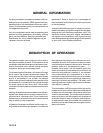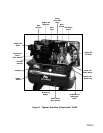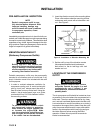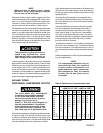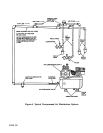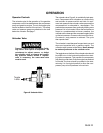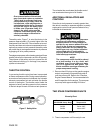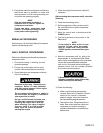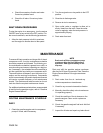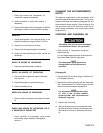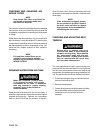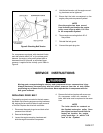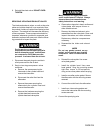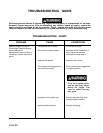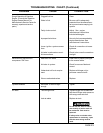
c. Check for excessive vibration and noise.
Correct any defects found.
d. Check for oil leaks. Correct any leaks
found.
SHUT DOWN PROCEDURES
To stop the engine in an emergency, turn the engine
ON/OFF lever or key switch to the OFF position. Un-
der normal conditions, use the following procedures.
1. Allow the tank pressure to build to maximum
and the engine to throttle down to idle speed.
To ensure efficient operation and longer life of the air
compressor outfit a routine maintenance schedule
should be prepared and followed. The following rou-
tine maintenance schedule is geared to an outfit in a
normal working environment operating on a daily ba-
sis. If necessary , the schedule should be modified to
suit the conditions found with your compressor outfit.
The modifications will depend upon the hours of op-
eration and the working environment. Compressor
outfits in an extremely dirty and/or hostile environment
will require a greater frequency of all maintenance
checks. The maintenance label mounted on the air
tank also lists the required maintenance checks.
For additional maintenance instructions, recommended
oil and fuel on the gasoline engine, refer to "Gasoline
Engine Owners Manual".
ROUTINE MAINTENANCE SCHEDULE
DAILY
1. Check the gasoline engine and air compressor
pump oil levels; add if necessary.
2. Turn the engine lever or key switch to the OFF
position.
3. Close the air discharge valve.
4. Remove air tool or accessory.
5. Open outlet valve or regulator to allow air to
slowly bleed from the tank. Close the outlet
valve or regulator when the tank pressure is
approximately 20 psig.
6. Drain water from tank.
NOTE
Drain and refill the compressor pump
crankcase after the first 100 hours of
operation. Add approximately 60 oz..
to pump.
Drain and refill the gasoline engine crankcase
after the first 20 hours of operation. See “Gasoline
Engine Owners Manual” for engine crankcase
capacity.
2. Drain water from the air tank and any
moisture separators or transformers.
3. Check for any unusual noise and/or vibration.
4. Manually check the safety valve to make sure
it is operating properly.
5. Check the condition of the air cleaner on the
gasoline engine. Clean and/or replace as
necessary.
6. Check the gasoline engine's fuel level. Add fuel
if necessary.
7. Inspect for oil leaks and repair any leaks found.
MAINTENANCE
PAGE 14



